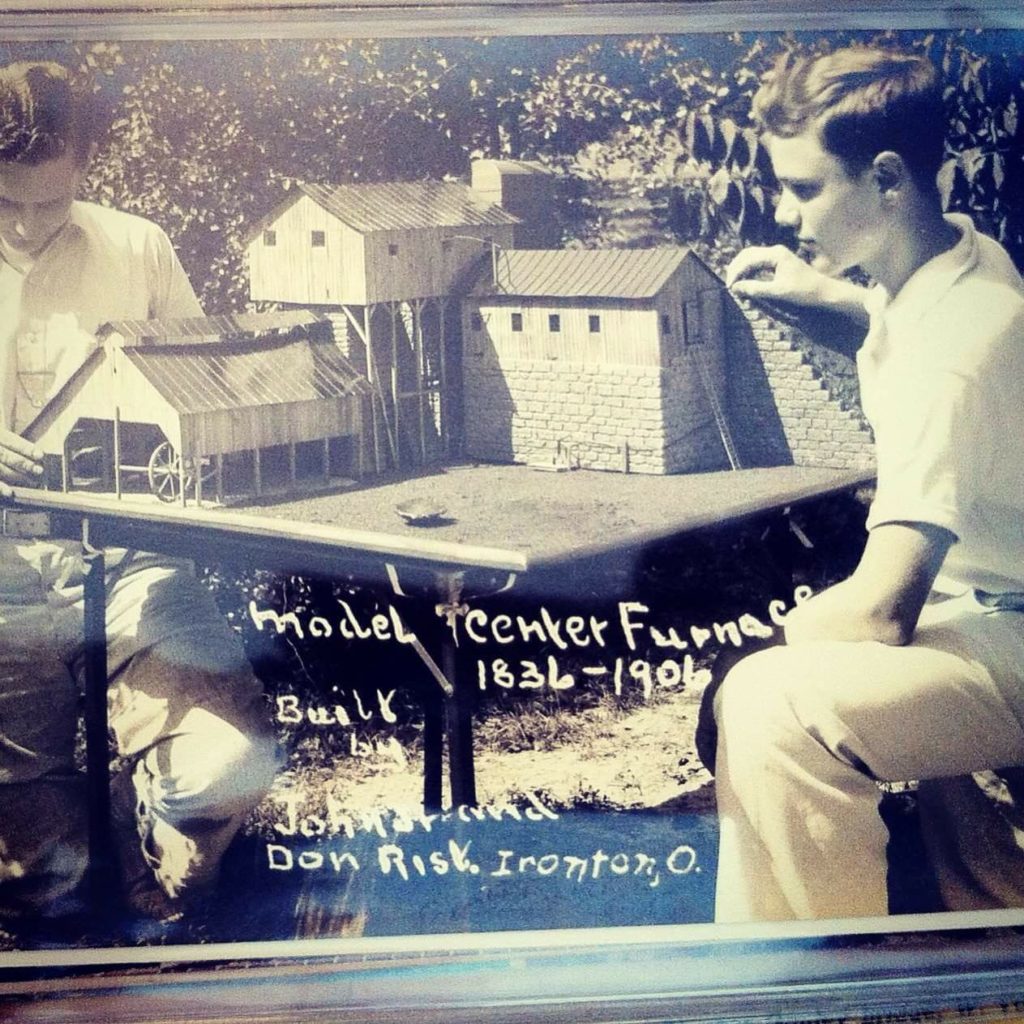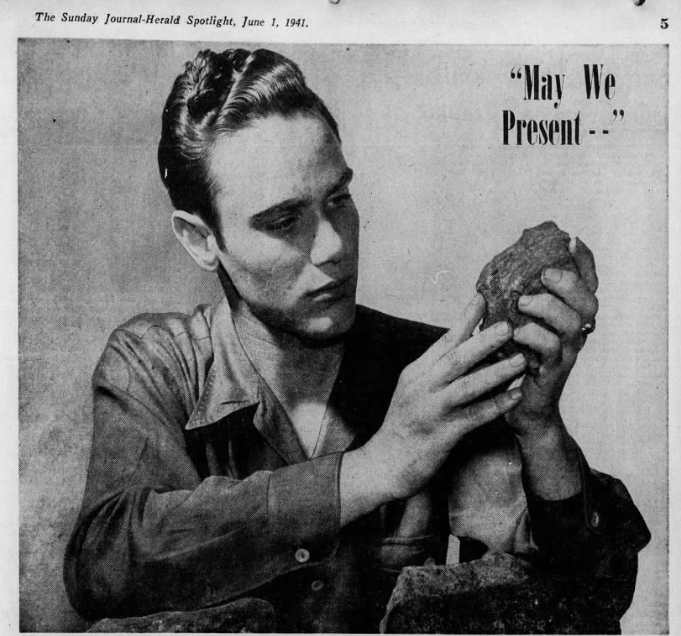
If you’d like to develop the hobby of collecting and If you have a large storage space, preferably a four-car garage or a small warehouse, you may get an idea from the story of Dayton’s most unusual collector. His two-ton pig Iron collection, the only one of its kind in the country, will challenge the ingenuity and the downright endurance of any prospective hobbyists along this line.
May we present Don Rist, an extraordinary collector who has turned the acquisitiveness of youth into useful channels of permanent historical value.
Beginning seven years ago, Don Rist, a 20-year-old University of Dayton civil engineering student, and his brother John started collecting specimens of pig iron produced by every furnace in their hometown area of Ironton, Ohio.
The country’s Iron Industry centered there more than 100 years ago. A pig is a hundredweight of Iron. The product is turned out by a furnace and thereafter converted to the particular purposes of the user.
Ironton was a flourishing center of the iron industry before the high-grade deposits were located in the Great Lakes region. This area, known as the Hanging Rock region, embraces even counties in southern Ohio and three in northeastern Kentucky.
Pigs Aren’t Pigs
The Rist brothers found that 96 furnaces had been established in that region. The first was the Brush Creek Furnace, which started in 1811 In Adams county. More were launched on their varying spans of life. Only five are in operation today. Scarcely a mark denotes the location of others, borne out of operation for more than a century. The pigs they produced were commercial products intended to be used. Hence the magnitude of collecting a complete set of specimens. But now the Rist can boast a complete collection. They have some duplicates.
The collecting of this group is the interesting story of two young high school students who, in 1934, started out on a difficult and unique hobby. It meant research in books, conversation with old timers, and endless tramping over the hills in search of the abandoned furnaces. Specimens came from odd places. Some were yielded from the ground near the abandoned remnants of an old furnace. Others were tracked down by tracing the paths of oxcarts from the furnaces to the Ohio river. Rist learned that often when the carts got mired while en route to the barges, drivers threw out a few of the pigs and didn’t bother to reload them.
A pig from the Cambria furnace was located in the foundation of a cabin. A long search for a specimen from the Hopewell furnace that had operated in Greenup county, Ky., ended when one was found being used as a weight on top of a farmer’s beehive.
Monitor’s Armor
The Rist brothers have found stories in the furnaces themselves and in their products. For instance, the Jefferson furnace in Jackson county turned out to be the iron from which armor plates were cast for that strange battleship of the Civil war, the Monitor. The Hecla furnace in Lawrence county produced the iron for the “Swamp Angel,” the largest cannon used in the Civil war.
Through their collecting, Don and his brother have come to know the only woman ironmaster in the world, Mrs. Nanny Kelly Wright. After the death of her husband in 1906, she managed the Centre furnace in Lawrence county, one of the last charcoal types. From a picture of the old Centre furnace, the Rist brothers constructed an exact scale model exhibited during the recent Northwest Territory celebration.
Although the collection is now complete and attracts the attention of scholars, geologists, and corporation executives, it doesn’t mean the end of the Rists’ activities. They’ve branched into broader fields and seek almost anything of historical, geological, or archaeological value. Each item is placed on a card Index and carefully retained as a permanent part of the varied and growing collection.
In Every State
They always plan to keep their prized collection, although they are eager to share its interest with anyone. They’ve taken to traveling and have been in every one of the 48 states. The natural result of these travels is that the Rists now boast specimens of minerals from all over the country. They have shells from the Great Lakes, the Atlantic and Pacific oceans, and the Gulf of Mexico. Historical books on their area, old iron items fashioned by the ironmasters themselves, and valued geological surveys, now out of print, all find their place in the collection.
It seems like a busy life, doesn’t it? But the collection is only part of the story. Don, who has one year more of civil engineering study at the University of Dayton, is also a painter.
He started painting when he was about 12 years old and works with oil, charcoal, and pencil sketching. His works have been exhibited in Lawrence county in the art division of youth hobbies, and, what’s more, they have won prizes. He paints still life mostly, but his engineering studies keep him occupied during the school year.

Currently, he is working on a mural at his home, showing local scenes of historical value around Ironton. This was started last summer and is being worked out in sections, each complete. This summer, life will complete the mural when he adds the final section to enhance the beauty and meaning of his home surroundings. All in all, Don is a most unusual young man. We can’t tell you about his brother in the Cincinnati College of Pharmacy, but we imagine he must be much the same type.
Since their early years, they have pursued with ingenuity and striking concentration their study and collecting of the area’s pig iron and allied articles. Doubtless, they are the best posted of anyone on the development of the iron industry and its technical advancements.
But above all, they know the human side of the absorbing saga of a bygone era when small furnaces, bossed by masters of their craft, lifted their smokestacks over the hills and poured forth the smoke that bespoke the greatness of a developing Industry that was to contribute its basic part to the greatness of the nation In which we live.
The Journal Herald, 01 Jun 1941, Sun, page 39

0 Comments